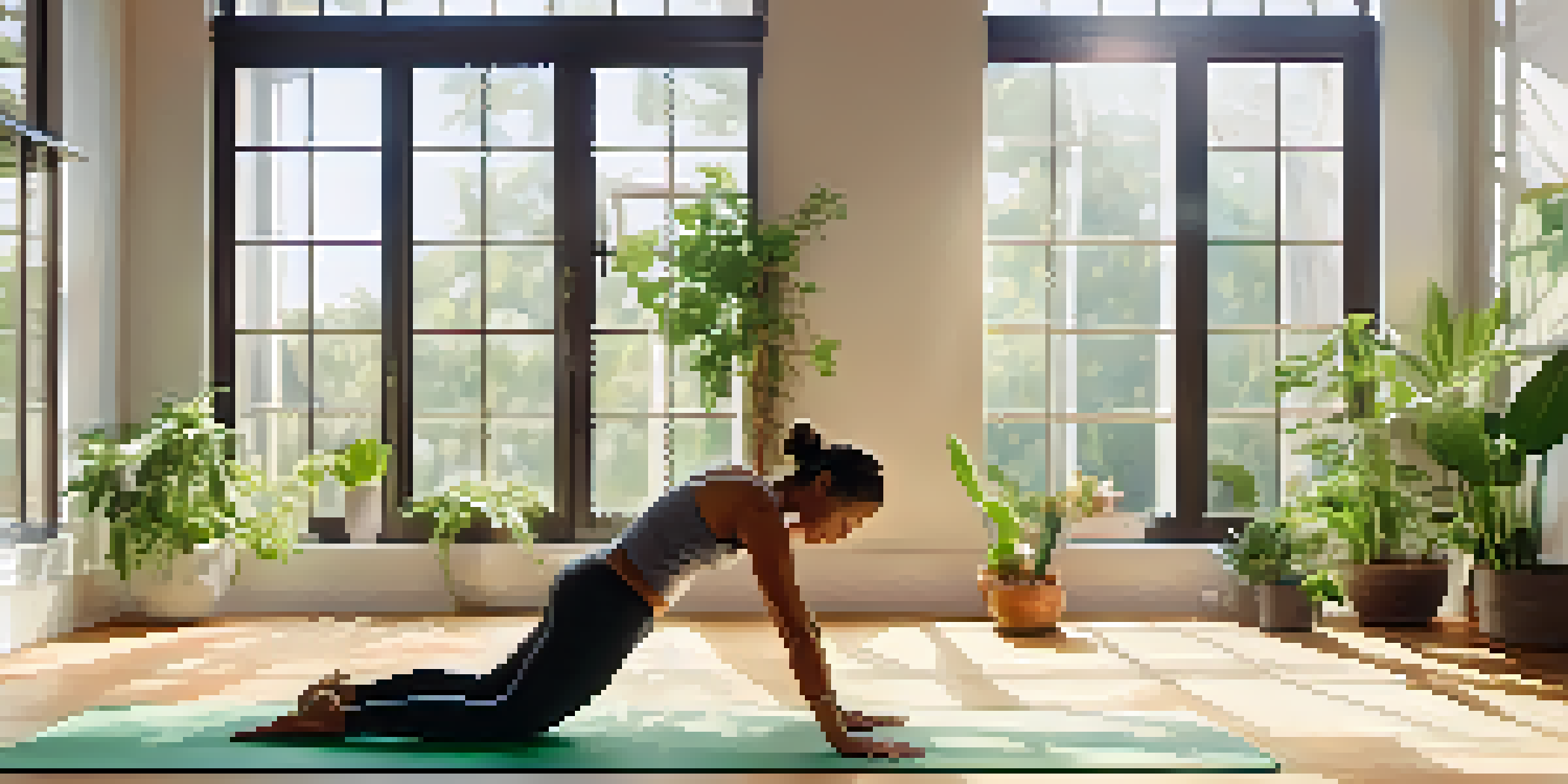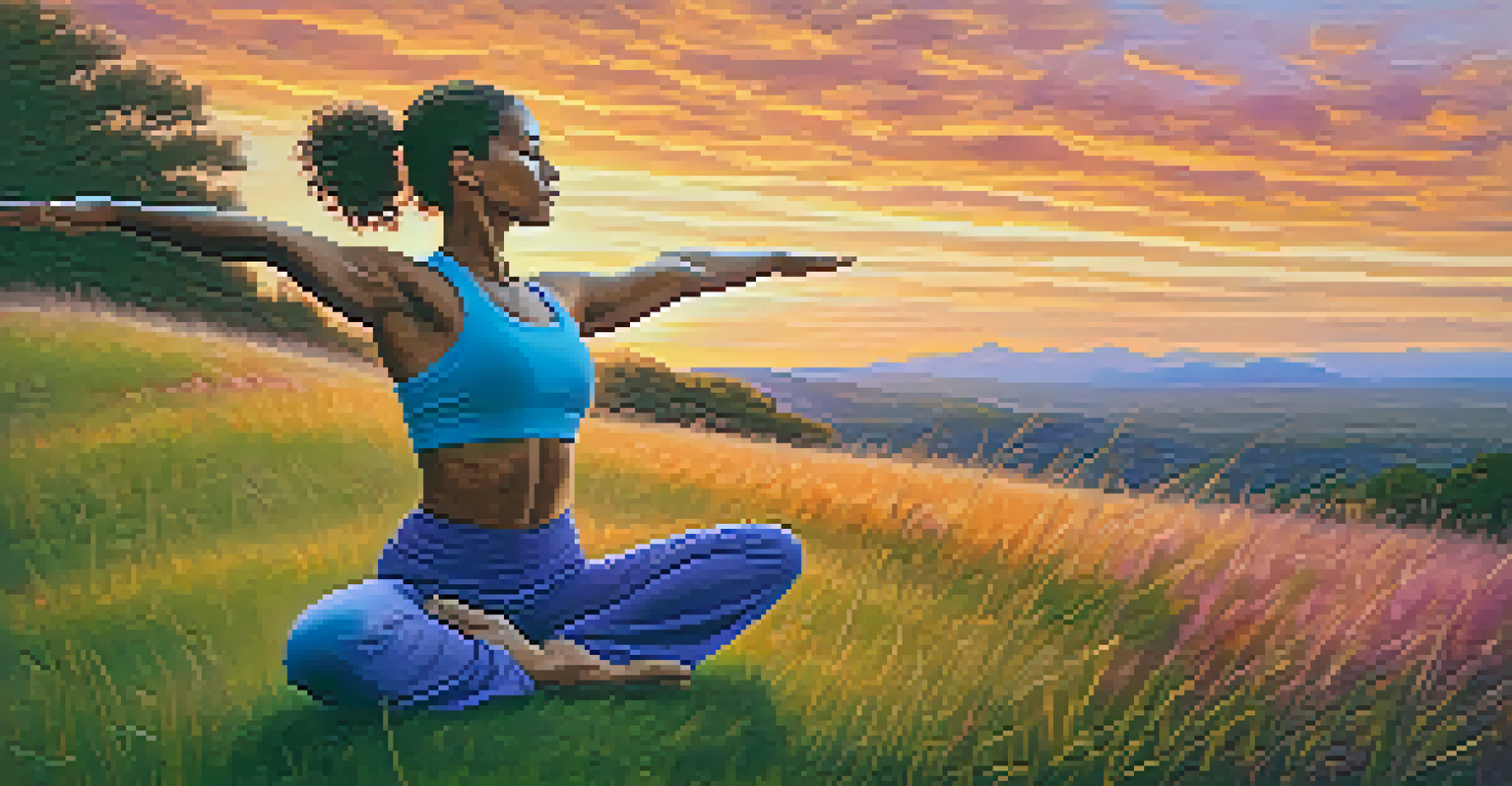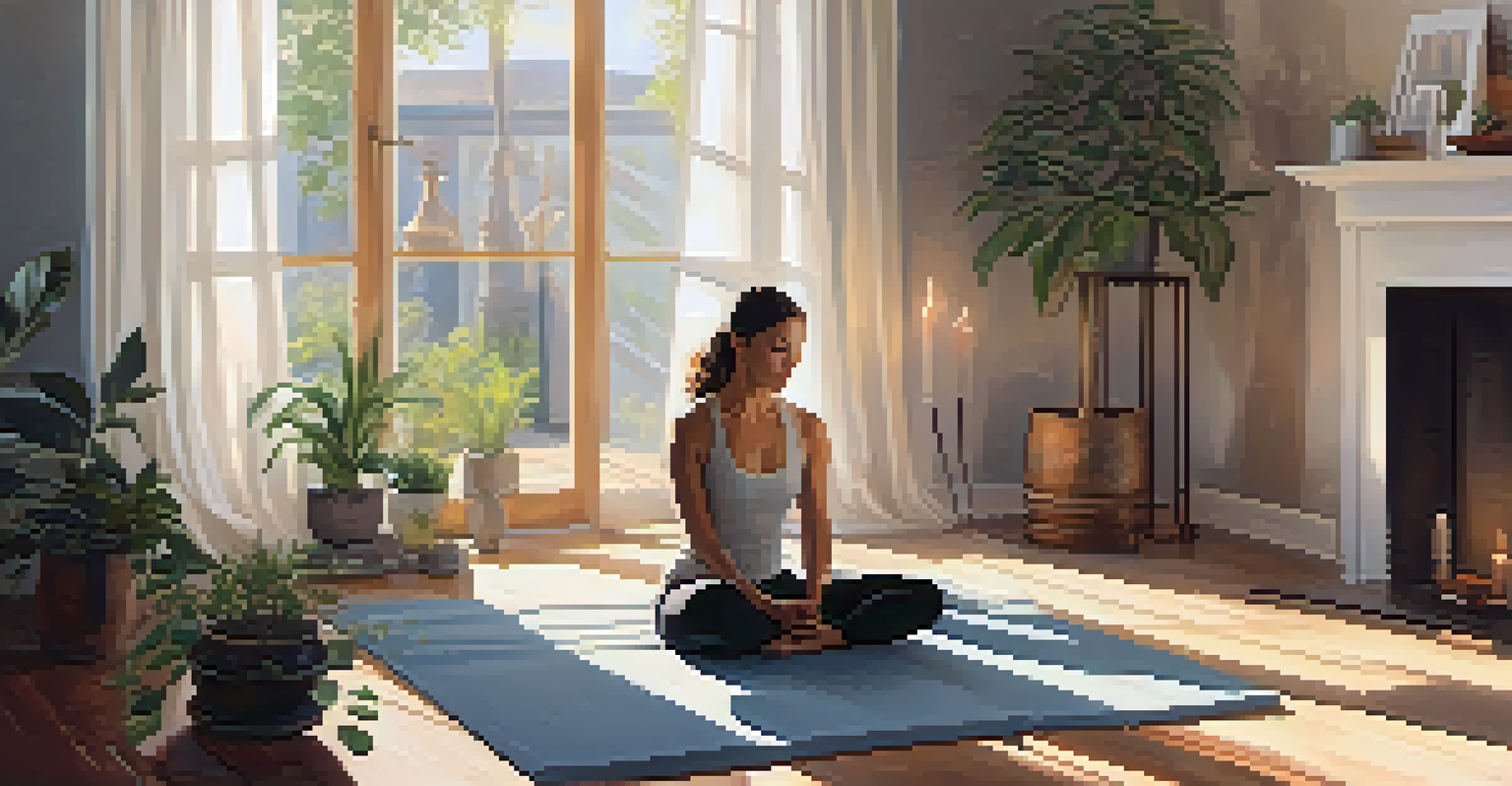Top 10 Yoga Poses for Improving Flexibility and Strength

Understanding the Benefits of Yoga for Flexibility
Yoga is not just about bending and twisting; it’s a pathway to improving flexibility. Regular practice can help lengthen muscles and increase the range of motion in your joints. This means that even simple everyday activities can become easier and more enjoyable.
Yoga is the journey of the self, through the self, to the self.
In addition to physical benefits, flexibility in yoga promotes mental clarity and relaxation. When your body is more open and relaxed, your mind can follow suit, leading to reduced stress levels. This connection between mind and body is what makes yoga unique.
So, whether you're a seasoned yogi or just starting out, embracing flexibility through yoga can enhance overall well-being. It’s a journey that brings harmony to both physical and mental health.
Strength Building: The Power of Yoga
While yoga is often associated with stretching, it also builds significant strength. Many poses require you to support your body weight in different ways, engaging various muscle groups. This not only tones muscles but also enhances endurance over time.

Think of yoga as a workout where you’re not just lifting weights but lifting your own body. For example, poses like Plank and Warrior II challenge your core and lower body strength, giving you a full-body workout. This versatility makes yoga an excellent addition to any fitness routine.
Yoga Enhances Flexibility
Regular yoga practice lengthens muscles and increases joint range of motion, making everyday activities easier.
Moreover, building strength through yoga improves your overall stability and balance. This can help prevent injuries in other physical activities, making your body more resilient as you move through life.
Pose 1: Downward Facing Dog for All-Round Flexibility
Downward Facing Dog is a foundational pose in yoga that stretches the entire body, especially the hamstrings, calves, and spine. As you press your heels toward the ground, you also engage your shoulders and arms, creating a full-body stretch. This pose is excellent for warming up before your practice.
Inhale the future, exhale the past.
To get into Downward Dog, start on your hands and knees, lift your hips up, and straighten your legs. It might feel challenging at first, but with practice, you’ll notice a significant increase in flexibility and strength in your upper and lower body.
Incorporating this pose regularly can help release tension from your back and improve your posture. Plus, it’s a great way to reset and find your breath during a yoga session.
Pose 2: Warrior I for Strengthening the Legs
Warrior I is a powerful pose that builds strength in the legs and opens up the hips and chest. As you sink into this pose, you’ll feel your quadriceps and glutes engaging, helping to tone and strengthen your lower body. It’s a great way to develop a strong foundation for more complex postures.
To practice Warrior I, step one foot back, bend your front knee, and raise your arms overhead. Focus on grounding your back heel into the mat while reaching upward, which helps improve balance and stability. This pose not only strengthens but also boosts confidence.
Yoga Builds Strength
Many yoga poses engage various muscle groups, enhancing overall strength, stability, and balance.
Regularly practicing Warrior I can enhance your athletic performance and improve your ability to handle other physical challenges. The focus it requires also helps cultivate mental strength and concentration.
Pose 3: Triangle Pose for Core and Side Stretching
Triangle Pose is fantastic for stretching the sides of your body while also engaging your core. As you reach your arm toward the floor and the other toward the sky, you’ll feel the stretch in your legs and torso. This pose helps to improve overall flexibility and balance.
To perform Triangle Pose, stand with your feet wide apart, extend one arm down to your ankle or a block, and stretch the opposite arm up. Keep your gaze toward your upper hand to maintain balance and alignment. This pose not only feels good but also strengthens your core and legs.
Incorporating Triangle Pose into your routine can create a sense of stability and openness in the body. It's an excellent way to relieve tension in the lower back and improve digestion as well.
Pose 4: Cobra Pose for Back Strength and Flexibility
Cobra Pose is a gentle backbend that opens up the chest and strengthens the spine. As you lift your upper body off the ground, you're engaging your back muscles, which can help alleviate stiffness from sitting or standing too long. It’s also a wonderful way to improve spinal flexibility.
To practice Cobra Pose, lie on your stomach, place your hands under your shoulders, and gently lift your chest while keeping your pelvis on the ground. This pose encourages a deep, full breath, which enhances lung capacity and circulation.
Key Poses for Flexibility and Strength
Incorporating poses like Downward Dog, Warrior I, and Pigeon can improve flexibility, strength, and overall well-being.
Regularly incorporating Cobra into your routine can improve posture and reduce back pain. It’s a reminder to open up your heart and shoulders, creating space for vitality and energy.
Pose 5: Pigeon Pose for Hip Flexibility
Pigeon Pose is renowned for its ability to deeply stretch the hips and glutes. This pose can help release tension stored in these areas, especially for those who spend long hours sitting. It’s a favorite for anyone looking to improve their overall flexibility.
To get into Pigeon Pose, start on all fours, bring one knee forward, and extend the other leg straight back. Lean forward gently to deepen the stretch, ensuring your hips stay square. This pose not only opens the hips but also relieves lower back discomfort.

Incorporating Pigeon Pose into your practice can enhance your range of motion and improve your running or cycling performance. Plus, it’s a soothing way to unwind after a long day.
Pose 6: Bridge Pose for Lower Body Strength
Bridge Pose is a great way to strengthen the lower back, glutes, and thighs while also opening the chest. As you lift your hips towards the sky, you create a gentle backbend that enhances flexibility in the spine. It's an empowering pose that can energize your practice.
To perform Bridge Pose, lie on your back with your knees bent and feet flat on the floor. Press into your feet and lift your hips while keeping your shoulders grounded. This pose encourages a strong connection between the body and breath.
Adding Bridge Pose to your routine can help alleviate tension in the lower back and improve circulation. It’s also a wonderful way to transition between poses, creating fluidity in your practice.
Pose 7: Seated Forward Bend for Deep Stretching
Seated Forward Bend is a calming pose that stretches the entire back and hamstrings. As you bend forward, you’ll notice a deep release in the spine and legs, making it a perfect pose for relaxation. It encourages introspection and helps calm the mind.
To practice this pose, sit with your legs extended in front of you and gently reach towards your feet. Don’t worry if you can’t touch your toes; the key is to keep your back straight and breathe deeply. This pose is about the journey, not just the destination.
Regularly including Seated Forward Bend in your practice can improve flexibility in the hips and lower back. It’s a great way to unwind and reflect on your day, promoting a sense of peace and tranquility.
Pose 8: Child's Pose for Recovery and Relaxation
Child's Pose is often used as a resting posture in yoga, providing a gentle stretch for the back and hips. It’s a comforting pose that encourages relaxation and recovery after more intense sequences. This pose is a reminder to listen to your body and take a moment to breathe.
To get into Child's Pose, kneel on the floor, sit back on your heels, and extend your arms forward on the mat. Allow your forehead to rest on the ground and focus on your breath. This pose can help relieve stress and fatigue, making it a perfect way to end a practice.
Incorporating Child's Pose regularly can enhance your overall yoga experience, offering a moment of stillness. It's a beautiful way to reconnect with yourself and find balance amidst the chaos of everyday life.